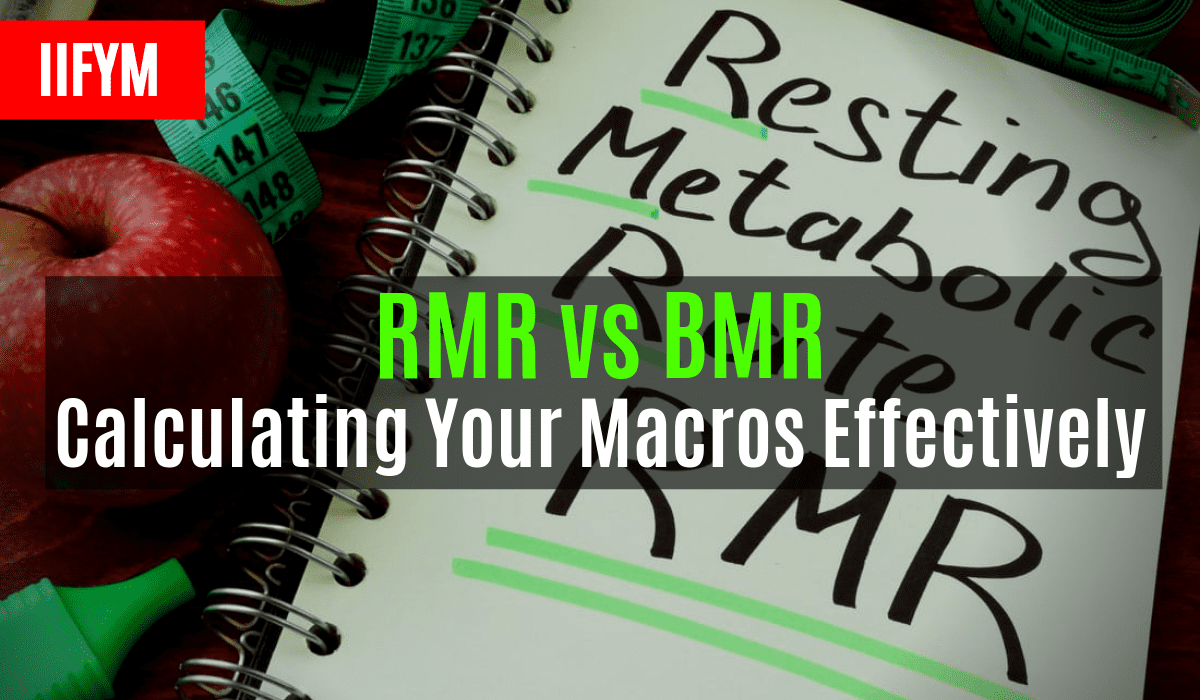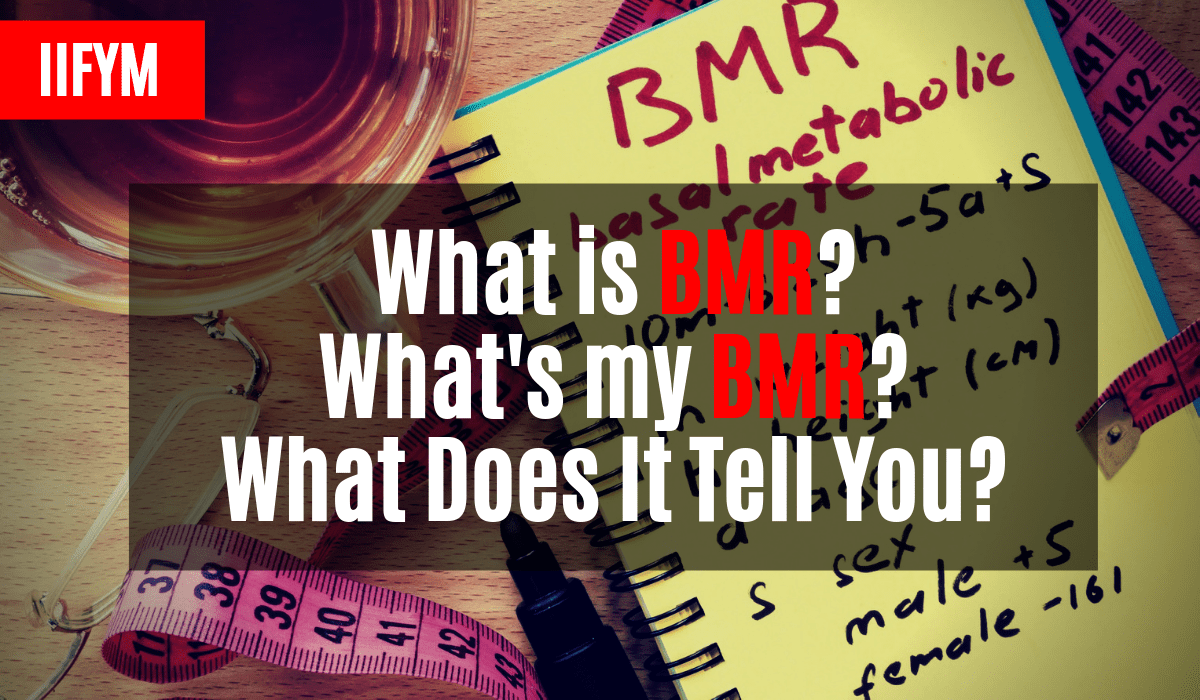What Is Resting Metabolic Rate?
What is Resting Metabolic Rate (RMR)?
The resting metabolic rate is . The RMR can be calculated by accounting for how many calories your body needs to perform certain basic functions like circulation, and breathing. The RMthe rate at which you body burns energy while at a complete restR is part of your body’s total daily energy expenditure (TDEE), which calculates the total number of calories that you burn a day.
RMR is commonly confused with BMR (basal metabolic rate). Nevertheless, while the RMR describes the number of calories that your body burns while at rest, the basal metabolic rate (BMR) describes the minimum number of calories that your body burns just to stay alive, without any external influences.
As such, the number of calories you consume or burn in any given day is ideally not useful in calculating weight loss, except if you know your RMR, since this number has to be accounted for in the overall equation.

RMR Accuracy and Perspective
While the BMR is a bit ore accurate, the difference is only notable in clinical settings. RMR is not only an accurate estimate of BMR, but also easy to calculate and enough in calculating your daily calorie needs. Of course, everyone’s RMR is different, and is usually influenced by your gender, weight, body composition, and age.
For instance, a person who’s very tall and muscular will require more energy to maintain their body at rest compared to a short, slender person.
Adult men tend to have more muscles and less body fat than women of the same weight and age.
They therefore have a higher metabolic rate. Muscle also has a tendency of decreasing with age, and since it’s a lot more metabolically active compared to fat, more muscle often translates to a higher metabolic rate. Losing muscle means you’ll have a lower metabolic rate and therefore burn less calories at rest.
Overall, the older you get, the lower your RMR will be, unless you can maintain your muscle mass or even increase it albeit slightly. To put it into perspective, if a 30-year-old woman that weighs 130 pounds and is 5’8 tall has an RMR of 1100, this signifies that on any given day, she needs to consume 1100 calories as a baseline to stay level.
One mistake people do is trying to reduce the number of calories they consume a day to below their RMR in an effort to lose weight. However, this doesn’t work – the body enters “starvation mode” where it stores food as fat instead. For this reason, you want to feed your body that minimum RMR, before you even bring physical activity into the equation.
Calculating Resting Metabolic Rate
There are a lot of calorie calculators that can be used to determine your RMR, and then account for your daily activity and daily exercise routine to calculate the number of calories that you burn on a daily basis. Alternatively, you can determine your RMR using an online calculator, doing the math on your own, or going to a lab or gym.
As mentioned earlier, the total amount of calories a person burns in a given day is referred to as the Total Daily Energy Expenditure (TDEE) and this comes from different sources including the RMR, the non-exercise activity thermogenesis (NEAT), thermogenic effect of food (TEF), excess post-exercise oxygen consumption (EPOC), along with exercise (Ex).
TDEE = RMR + NEAT + TEF + EPOC + EX
Both the TEF and the RMR are relatively constant, with minimal fluctuations throughout the day due to muscle conditioning and mass, as well as dietary shifts. The exercise components and NEAT have large fluctuations, and they can greatly influence the total caloric expenditure.
There are two main ways of calculating how many calories a person burns in a day. A relatively accurate but inherently more difficult way is called indirect calorimetry. It uses expired gases to calculate the types and amounts of fuel being utilized.
The easiest way to get your RMR is using a quick and easy RMR calculator. When you search for one online, they should generally give you the same number. What you need to do is provide your height, age, weight, and gender details.
Calculating RMR in a Lab
Some clinics and health clubs do offer metabolic testing to provide you with your RMR. The test usually takes about an hour, and is often combined with testing to establish your caloric needs as well as heart rate targets for exercise.
The most common testing protocols entail having the person wear a mask for about 15 minutes or so while resting. The mask will measure the exchange of gases to determine the number of calories that the body burns while at a complete rest. For exercise testing, you will need to wear the mask while on a bike or treadmill to determine how many calories you can burn while the body is working.
Normal RMR Levels
Once you’ve determined your resting metabolic rate, it’s tempting to want to compare your result with the RMRs of others, perhaps to see if yours is normal. However, each person is unique, so don’t expect your number to match that of your family member or friend.
According to a number of sources, the average RMR for women is about 1400 calories a day, while that of men is just over 1600 calories. However, just because your number is below or above this average doesn’t indicate whether your RMR is normal or not.
Changing your Metabolism to Lose Weight
If you’re looking to lose weight effectively, you need to know your resting metabolic rate along with the total number of calories you burn per day, including your NEAT and exercise. Also keep in mind that the number you get when you calculate your RMR is just an estimate. Whether you go to a gym, a lab, or use an online calculator, the number you get won’t be exact.
This is helpful to know if you’re trying to lose or gain weight.
Some experimentation will come in handy to get your food intake (calories in) to balance out with your metabolism (calories out), in order to reach your end goal. With a good estimate of how many calories your body is burning every day, you can change your daily activity level or your dietary intake to create an energy/calorie deficit.
This way, you’ll be able to achieve permanent weight loss without the risk of damaging your metabolism.
What is BMR (Basal Metabolic Rate)?
Your body needs energy in the form of calories to function normally. Each minute of every day, your body is performing life-sustaining activities. You have to breathe, blink, circulate blood, control body temperature, grow new cells, support brain and nerve activity and contract muscles.
The amount of energy (in the form of calories) that the body needs to function while resting for 24 hours is known as the basal metabolic rate, or BMR. This number of calories reflects how much energy your body requires to support vital body functions if you were resting for an entire day.
You can use IIFYM’s BMR calculator to find your BMR. Here at IIFYMs, we take a different tack.

What is a good BMR rate?
- BEE = 293 − 3.8 × age (years) + 456.4 × height (meters) + 10.12 × weight (kg)
- BEE = 247 − 2.67 × age (years) + 401.5 × height (meters) + 8.6 × weight (kg) …
- Low active: PA = 1.12, when 1.4 ≤ PAL <1.6.
- Very active: PA = 1.54, when 1.9 ≤ PAL <2.5.
- Low active: PA = 1.14, when 1.4 ≤ PAL <1.6.

No comments:
Post a Comment